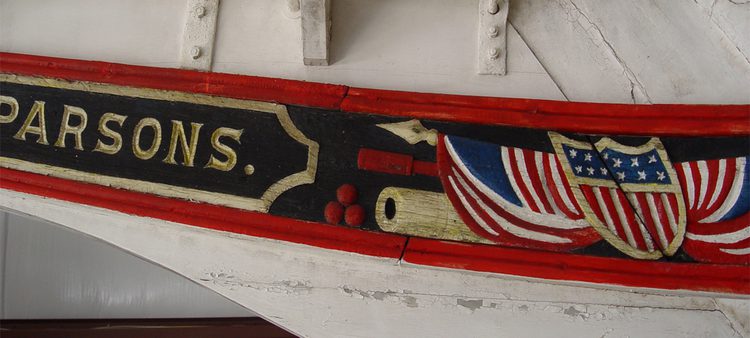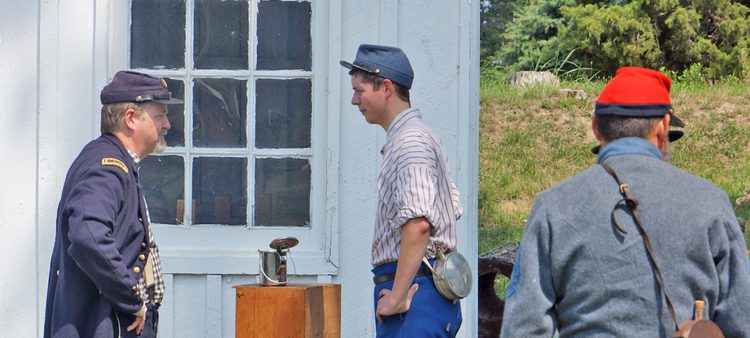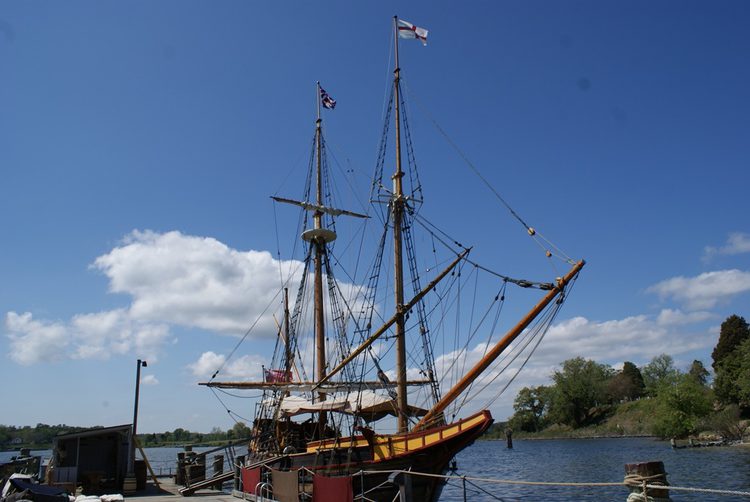About St. Mary’s
History
Here's a look at St. Mary's County's rich history.
Students: you'll find info here for your reports - and don't forget to check out our "Famous Firsts" on the Stats & Facts page!

Early St. Mary’s County
St. Mary’s County is the birthplace of Maryland. Maryland was an idea of George Calvert, First Lord Baltimore, who wanted a place where all religions were allowed to practice freely. George Calvert petitioned King Charles I in the early 1600s for a land grant to establish a new colony. George Calvert died before he was able to see his idea come to life. His son, Cecilius Calvert, Second Lord Baltimore, inherited his estate. In November 1633, Cecilius Calvert sent his brothers George & Leonard Calvert, along with 140 passengers aboard the Ark and the Dove bound for Maryland. The two ships landed on St. Clement’s Island in March of 1634.
On March 25, 1634, Father Andrew White, who sailed with the first colonists, celebrated the first Roman Catholic Mass on St. Clement’s Island. The island was small, so the ships traveled further south. Leonard Calvert bought about 30 miles of land below the Wicomico River from the Yaocomaco Indians with bolts of fabric, axes, and other farm tools. The settlers moved in among the Indians who assisted them while they established their settlement. This area became the State’s first capital, St. Mary’s City. The capital was later moved to its permanent home in Annapolis.
Colonial life was difficult, but settlers soon began to grow tobacco, which became the lifeblood of the colony. Tobacco was prosperous for many farmers which allowed them to purchase land and build large plantation homes such as Historic Sotterley. Tobacco was a labor-intensive crop linked closely with the development of slavery in Maryland. During this time, the area’s rivers played a major role in plantation life as these were the highways of that era. Barges would travel up and down the waterways of the county transporting supplies.

Revolutionary War & War of 1812
In July of 1776, the residents of St. Mary’s County were confronted with the reality of war when a British fleet of 72 ships made an unexpected appearance off Point Lookout.
The fleet was under the command of John Murray, Earl of Dunmore and former Royal Governor of Virginia. The fleet’s target became St. George Island, a two square mile piece of low-lying marshland at the mouth of the St. Mary’s River. The fleet was short of provisions, particularly fresh water, and beset by a serious outbreak of smallpox.
The St. Mary’s County militia harassed the British landing parties. By the end of July, Lord Dunmore realized that using the island as a base of operations in the Chesapeake Bay was on shaky ground and at the beginning of August his fleet quit the Island. The British Navy continued to harass the lower part of the county. Many prominent plantations along the banks of the waterways were all targets of unrelenting plundering. In desperation, barges were loaded with explosives and floated at night into the anchored British ships. Many men from St. Mary’s County fought with General Smallwood against the British in New York. St. Mary’s County’s lost some 2,000 men, 40% of its labor force during the Revolutionary War.
During the War of 1812, the Chesapeake Bay was an important theater of war. The British Navy used it as its base to launch assaults on Washington and on Baltimore. As in the Revolutionary War, the British invaded and continuously raided the area. Many enslaved Americans fled to the British including over forty from Historic Sotterley.

The Civil War Years
Although no Civil War battles took place in St. Mary’s County, sympathies for the South ran high among the white population. Smugglers from Southern Maryland slipped through the night and across the Potomac River to Virginia in a game of cat-and-mouse with the Union’s Potomac Flotilla.
In the summer of 1857, William Cost Johnson had purchased 400 acres of land at Point Lookout for a resort. The property was eventually turned over to the United States Government for a military hospital. The facility was named Hammond Hospital. Less than a year after the arrival of the first patients at the hospital, the Union decided to establish a prisoner of war camp there and they named it Camp Hoffman. Tens of thousands of Confederate prisoners were held there under miserable conditions. More than 3,389 Confederate soldiers died at Camp Hoffman. Two monuments located outside Point Lookout were erected to honor confederate prisoners who died there. Black Countians, both slave and free, joined the U.S. Colored Troops regiments and fought against the Confederate army. Three were awarded the U. S. Medal of Honor for bravery. A monument in Lexington Park honors their bravery.
After the war, St. Mary’s County’s economy went into decline and 17% of the population migrated to Kentucky and other parts west due to the availability of western land. Another reason for emigration was that a large portion of St. Mary’s Countians were Catholic. Catholics were not allowed to hold any political office in Maryland, which angered many in the county.
In addition to tobacco farming, making a living off the water was a traditional way of life in St. Mary’s County. For centuries, fishing the surrounding waters of the Patuxent and Potomac Rivers and the Chesapeake Bay were the waterman’s means of survival. His greatest asset is his boat and a large variety of special working boats were used to fish, crab and oyster. These included nancys, dories, skiffs, log canoes, skipjacks, bugeyes, and pungies.

The Twentieth Century
The establishment of the Patuxent River Naval Air Station in the 1940s has had a lasting effect on the lives of the residents of St. Mary’s County. During World War II, the U.S. Navy established a flight-testing center. Here, major advances in aircraft such as the Harrier, Tomcat, and Osprey were evaluated. It was also here that the nation’s first astronauts were trained. Today, the Patuxent River Naval Air Station provides the most employment opportunities in the county.
In 2000, the state government decided to decrease the amount of tobacco grown in Maryland through the “Tobacco Buyout Program”. Farmers who wished to participate were paid to stop growing tobacco. They are paid $1 per pound of tobacco based on their average crop for 10 years. Farmers participating in the buyout looked for alternative crops such as bedding plants, produce, and corn. The waterman population has also decreased. Today, only about six percent of the population works the water. Although the farmers and waterman have declined, St. Mary’s County is on the rise in terms of technology jobs. St. Mary’s County had over 200 technology companies and is steadily expanding these numbers each year.

LEARNING LINKS
Here are links to other websites where you will find more information about St. Mary’s County and our State.
- Historic St. Mary’s City
- Leonardtown (County Seat)
- Maryland at a Glance – State Symbols
- Maryland Department of Natural Resources
- St. Mary’s County Genealogical Society
- St. Mary’s County Government
- St. Mary’s County Historical Society
- St. Mary’s County Public Libraries
- Maryland Humanities Council
- Maryland Public Television – Exploring Maryland’s Roots
- Unified Committee for African American History


